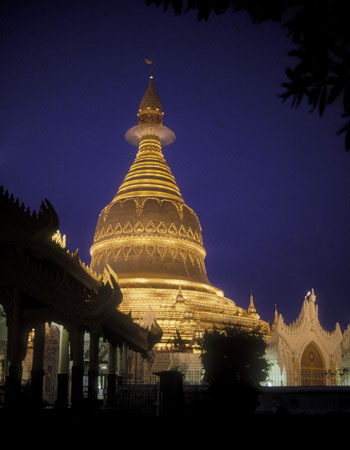 The so-called blue hour is the period of twilight prior to dawn or after sunset when it is neither fully light nor fully dark. After the sun has set, or just before it rises, the sky on the opposite side of the horizon turns deep uniform blue. Spectacular variations of this colour then spread (or recede) across the sky, ultimately turning to (or lifting) the black of night. These periods, which despite their name last for only a few minutes, are considered ideal for capturing some types of images - cityscapes being the most commonly quoted example. The light during the two relevant periods each day is sufficient to expose properly the background details but not bright enough to overpower city lights. The "blue hour" often lasts for only about ten minutes so it is important to understand when it occurs in a particular location and on a particular date. Photographers appreciate the blue hour because it is possible to capture wonderful blue tones that transform a cityscape from an average shot into something very special.
The so-called blue hour is the period of twilight prior to dawn or after sunset when it is neither fully light nor fully dark. After the sun has set, or just before it rises, the sky on the opposite side of the horizon turns deep uniform blue. Spectacular variations of this colour then spread (or recede) across the sky, ultimately turning to (or lifting) the black of night. These periods, which despite their name last for only a few minutes, are considered ideal for capturing some types of images - cityscapes being the most commonly quoted example. The light during the two relevant periods each day is sufficient to expose properly the background details but not bright enough to overpower city lights. The "blue hour" often lasts for only about ten minutes so it is important to understand when it occurs in a particular location and on a particular date. Photographers appreciate the blue hour because it is possible to capture wonderful blue tones that transform a cityscape from an average shot into something very special.
The image on the left was taken in the last moments of the blue period as the blue of the darkening sky finally faded to black. The picture shows the illuminated and gold-plated Shwedagon Pagoda in Yangon, Burma.
Capturing good blue-hour images is a relatively straightforward process. The first requirement is a suitable location from where a good cityscape or comparable scene can be composed. The scene should be balanced and visually pleasing, and also incorporate some interesting lighting that is distinctive but not overpowering. The camera should ideally have manual exposure setting and compensation capabilities, and must be set up on a stable tripod with a remote shutter release because typical exposures may be of the order of 5 - 10 seconds. The chosen aperture should be reasonably small (high f-number such as f/8 or f/11). Make sure that any in-built flash system is turned off.
Once the blue hour has arrived, expose a number of shots at various settings, typically around -1EV although experimentation is essential. Try to avoid lights close to the camera such as bright streetlights, and even bright lights that are not photographed directly. Light entering the lens at oblique angles can cause flare and consequent lack of contrast.
The times of the blue hour in a particular location and on a particular date can be calculated using our Blue Hour Calculator.






